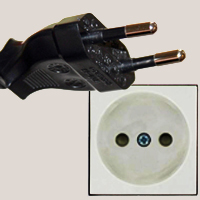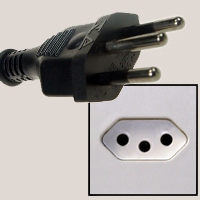Latin America Regulatory Compliance Group
Type Approvals for Latin America and the Caribbean
Latin America Regulatory Compliance GroupLARCG COVERS BRAZIL
LARCG COVERS LATAM
Type Approval in Brazil: ANATEL and INMETRO
Two agencies grant certifications for electrical/telecommunications equipment to be sold in Brazil: ANATEL and INMETRO.
ANATEL (Agência Nacional de Telecomunicações) regulates telecommunications in Brazil. Products that connect to the public telephone network require ANATEL type approval. Such products include network routers with E1 WAN ports, WiFi 802.11a/b/g/n access points, GSM and CDMA cellular phones, network switches, and satellite, Bluetooth, and ZigBee products.
The ANATEL approval process requires in-country testing; test reports from foreign accredited labs are not accepted. Note that Brazil requires stringent safety testing, in part due to the country’s frequent lightning strikes. Tests for electrical safety and conducted emission are the most frequently failed tests in Brazil.
Most products require an ISO 9001:2008 certificate. Family approval may be possible depending on the equipment, and typically one or two samples are required for testing. ANATEL also has labeling requirements, again depending on equipment type.
In addition, Brazil requires manufacturers selling in the country to have local representation. LARCG can help with local representation for firms lacking an in-country legal entity.
Whatever is necessary, LARCG handles the certification process for you in Brazil from start to finish.
Products requiring ANATEL certification include:
- Cell phones
- Bluetooth headset
- Wireless telephones, including DECT systems
- Antenna systems
- Digital communication systems
- Security gateways
- Wi-Fi modules
INMETRO
INMETRO grants approval for products seeking bids with governmental institutions. It is generally beneficial to have for marketing purposes. The INMETRO approval is valid for two to six years, depending on the product, with annual maintenance required for most products. In some cases, an international test report may be accepted. INMETRO also has product labeling requirements, depending on the type of equipment.
Products requiring INMETRO approval include:
- Computer goods
- Kitchen and home appliances
- Medical appliances
- Fans
- Needles and syringes
- Microwave ovens
- Electric commercial ovens
- LED lights
Brazil Plug Types

Type C plugs are most commonly used in South America, Asia, and Europe (except the United Kingdom, Ireland, Cyprus and Malta), and are rated at 2.5 Amps. They operate on AC current at 220 – 240 Volts. Probably the most widely used international plug, CEE 7/16 or Europlug, features two 4 mm round pins measuring 19 mm in length, which are spaced 17.5 mm apart at the tip and 18.6 mm apart from the center point of each pin’s base. 10 mm long insulated sleeves slightly cover the base of the pins; however, they are relatively flexible which allows the plug to mate with any socket that accepts 4.0 – 4.8 mm round contacts on 17.5 – 19 mm centers. As a class II plug, the Europlug is generally limited to applications that require 2.5 amps or less. Note: whereas type C plugs are very commonly used, this is not the case for type C sockets, as these sockets are older and not grounded. Most counties now require grounded sockets to be installed in new buildings; and as such, the sockets have become illegal almost everywhere and they are being replaced by type E, F, J, K or N. To be clear, only the sockets have become illegal; the plugs remain in use.

Type N plugs are almost exclusively found in Brazil; in fact, the type N plug, or NBR 14136, and socket are the official standard in Brazil set forth by the Associação Brasileira de Normas Técnicas (ABNT). There are two versions of the type N plug: a 10 Amp and 20 Amp version. The prongs of the 10 Amp version measure 4 mm, while the 20 Amp version measures 4.8 mm in diameter. Both versions have pins measuring 19 mm long. Distance from the center of each prong is 19 mm, while center-to-center distance between the earth pin and the middle of the imaginary line connecting the two power pins is 3 mm. Both operate on AC current at 100 – 240 Volts. Note: Due to Brazil’s lack of standard voltage, there exists a level of risk in using appliances that are rated for either 220 Volts and 127 Volts, as there is only one official socket type.